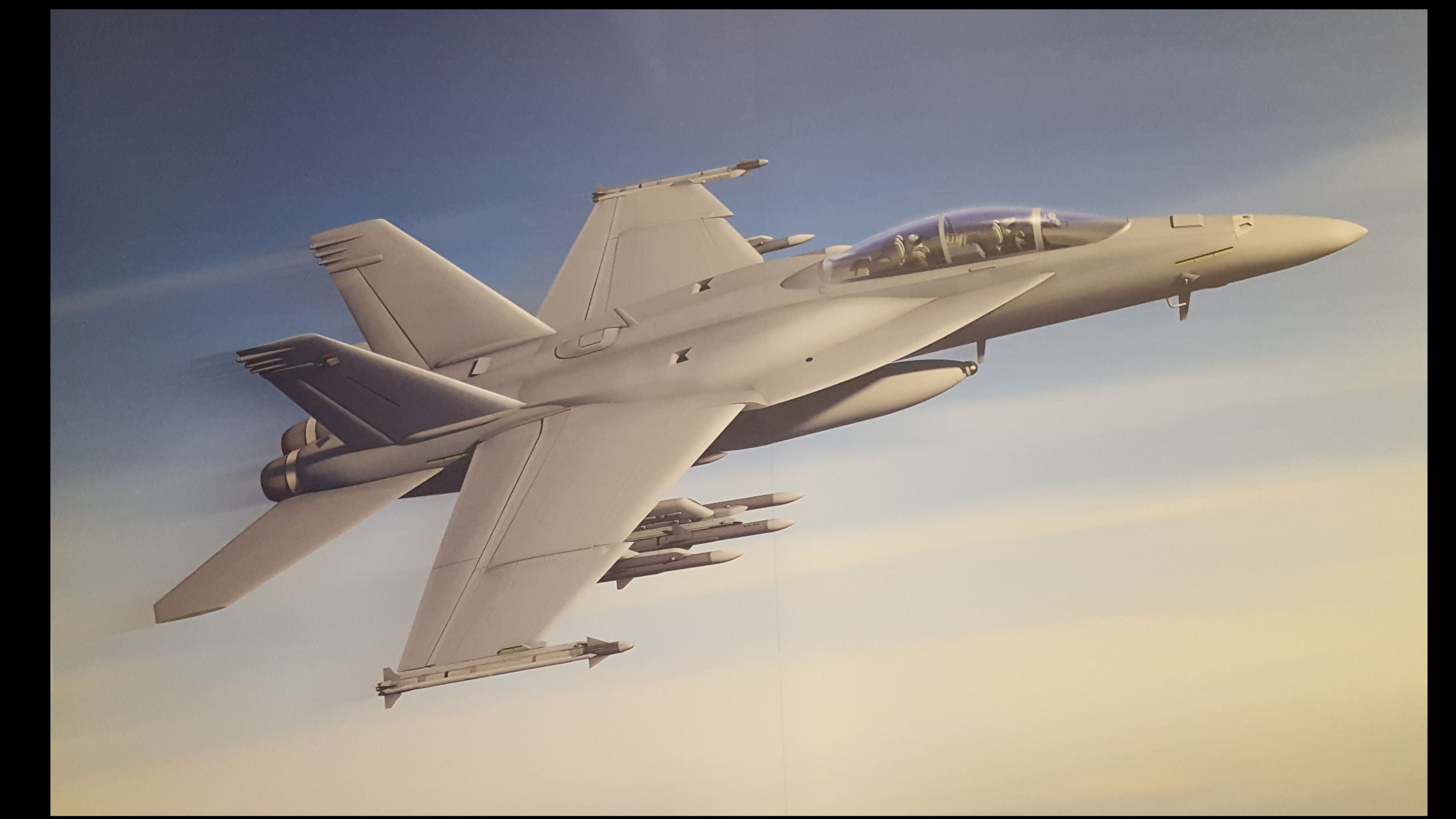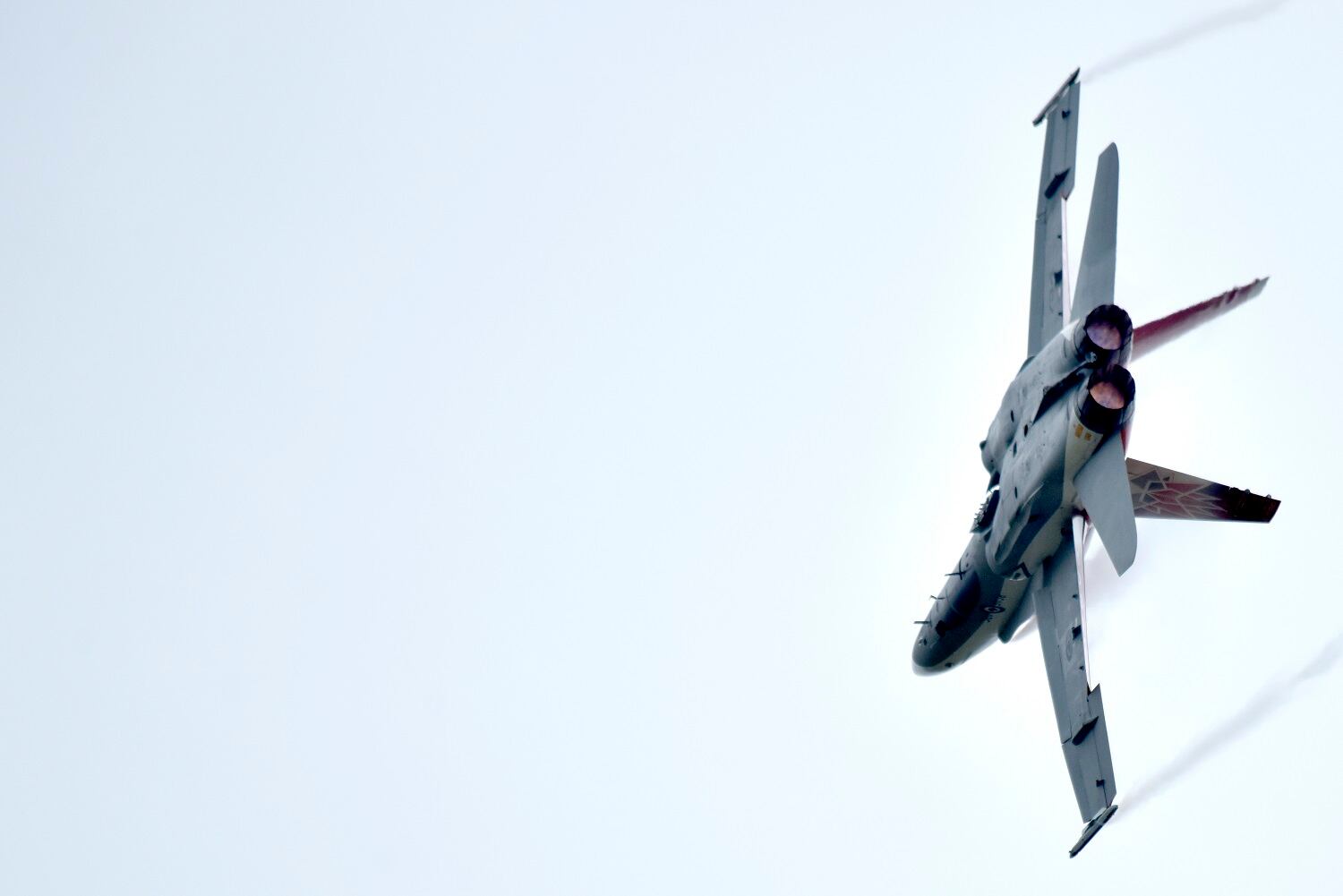WASHINGTON — Boeing believes an upcoming service life extension of its Super Hornet fleet, set to begin next year, would be an optimum time for the Navy to build in new upgrades, add conformal fuel tanks and to make it more stealthy.
The Navy and Boeing are currently negotiating the first service life modification (SLM) contract — expected to be awarded early 2018 — which will lay out the structural modifications the company will conduct to extend the life of the F/A-18E/F Super Hornet from 6,000 to 9,000 flight hours.
But for an additional cost, the company could also upgrade the Super Hornets to the more advanced Block III configuration during the modification period, said Mark Sears, Boeing’s director of SLM.
“What SLM allows is, while we have the aircraft open to do the life extension mod, we can go ahead and apply the provisionings for the conformal fuel tanks, the advanced cockpit station and also the advanced networking [system],” he said. The company could also apply low observable coating to the aircraft to help reduce the aircraft’s signature.
Sears couldn’t provide a specific price tag for inserting the Block 3 mods into SLM, but acknowledged that there would be an additional cost to develop retrofit kits as well as “a few million” dollars more per plane to make the relevant changes.
RELATED

While the Navy plans to invest $267.9 million over the next five years to develop Block III technologies, which would roll off the line as new Block III Super Hornet jets as early as 2020, it currently has not sought out money to bring its older F/A-18E/Fs to the more advanced configuration. However, Navy budget documents note that the service intends to transition “Block II Fleet aircraft (lots 26 and up)” to Block III during SLM.
“We haven’t necessarily seen the funding for the retrofit piece of it yet, but I think it is in their plan to do Block II to Block III conversions,” Sears said.
“Those jets are going to fly for another 10 or 15 years. … They’re going to be in the fleet for a while, so getting the advanced capabilities is a big deal to sustain them out into the next decade,” he said.
But while it makes sense to incorporate Block III modifications in the life extension effort, Sears acknowledged that Boeing will not be ready to retrofit the initial planes coming in for SLM. The first Super Hornet is expected to come in for its service life extension next April, and four aircraft total will be inducted in 2018.
Meanwhile, the company will not have the Block III retrofit kit ready until the early 2020s, which mean that the first SLM jets would get those upgrades at a later date.
The Super Hornet SLM effort is set to take about 10 years, with as many as 50 aircraft going through the process modifications per year starting in 2023, according to the company.
RELATED

When the “classic” F/A-18A-D Hornets went through the life extension process, the Navy’s strike fighter inventory was dogged by shortfalls caused in part by difficulties in getting the Hornets out of depot. Sears said Boeing is taking the lessons learned from the classic Hornet life extension and applying them to the Super Hornets.
For instance, Boeing is doing work to help the company understand which structural changes need to be done to the Super Hornet and the best way to do that work at a much earlier time in the F/A-18E/F’s lifespan. The company has bought new material from suppliers ahead of the start of SLM, and it’s sought out special permissions from the Navy that will empower it to make certain engineering decisions without the service’s permission.
Boeing also split two aircraft in half to take a look at the material condition of jet and figure out how to access “hot spots.”
The two aircraft have been “surprisingly clean” of corrosion and Boeing has found that it won’t have to take the jets’ wings in order to do structural modification work, Sears said.
“We learned that we are going to have to remove fuel cells from most of the jets in order to do mods, and while that’s not great news, at least now that we know, we can go ahead and plan than into the supply system.”
Valerie Insinna is Defense News' air warfare reporter. She previously worked the Navy/congressional beats for Defense Daily, which followed almost three years as a staff writer for National Defense Magazine. Prior to that, she worked as an editorial assistant for the Tokyo Shimbun’s Washington bureau.







